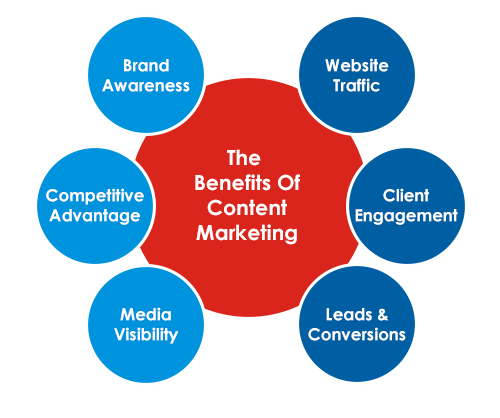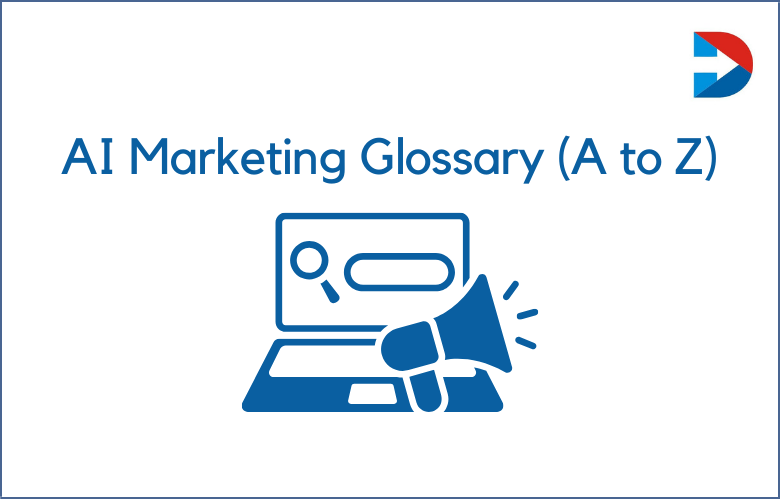Education Marketing: What was implemented before COVID-19 may not exist in today’s digital marketing world. Moreover, educational product marketing is a bit risky field where the COVID-19 pandemic has shown a substantial deadly impact. In 2024, Corona shut down all the educational institutions and schools. However,t it opened doors for marketers to roll out their marketing strategies to sell the educational products that all educational management wants to hire. Moreover, the evolution of technology and time is changing the shape of the market. Educational institutes seek new ways to prove themselves in this pandemic year. Am I right? Thereforen, we’ve listed the #1 educational product marketing strategies.
What is Educational Marketing?
Educational marketing is the process of building trust by sharing knowledge. Mainly, ed, and educational marketing helps marketers establish the customers’ trustworthiness by distributing educational products and messages that can fulfill the consumer’s purposes.
Educational institutions are profoundly transforming their teaching terminology by adopting advanced technologies, marketing strategies, and internet usage through which they reach market trends.
What are some types of educational products?
Most institutes, schools, and colleges are turning towards implementing new technologies and methods to be on the market’s competitive edge. The different categories of educational products bring creativity and excitement to the students and the management. Those types of products can be the following.
Freemium for Teachers:
This freemium-type product can offer limited features or little support to the teachers that can be obtained through the free products.
Freemium for Students:
This is provided for the students, which lets them use the software or any product for free, and after limited usage, the brands convince them to become customers.
Freemium for Schools:
This is the one that can be obtained by the school management through which they can find the accessible version of educational products or services features. The staff and students will play a role in convincing the decision-makers to buy.
Selling to Other EdTech Companies:
The businesses are selling the products to other EdTech companies that they can access freely and pay while distributing to others.
Enterprise Sales:
Here, selling products directly to the school management will take place.
Direct to the consumer:
In this type, the targeted audience is parents who play a vital role in purchasing educational products.
What are the four types of marketing strategies for Educational Products?
Social cause:
This marketing strategy links the specific company’s products to the social cause.
Social media marketing:
It is one of the best sources to reach real-time consumers, and social media is the only one that engages millions of teens and kids. YouTube and Instagram are the best examples to find.
Product development:
The creation of new products should engage existing consumers, and that should bring referrals.
Undercover marketing:
This marketing strategy will let the companies target the consumers without knowing they are being marketed about the products.
What are the ten marketing activities for Educational Products?
- Use Social Media Platforms like LinkedIn, Instagram, YouTube, etc., to engage the millennials.
- Digital advertising in your marketing budget will help you launch effective ad campaigns cost-effectively.
- Creating a Mobile-Friendly website with an optimized landing page can help you find conversions quickly.
- Encouraging students to leave online reviews can be a better source to build brand identity and trust.
- Create video content through which you can engage the audience in real time. Promotingf education apps will let you find the potential sales of your educational products or services.
- School marketing is the most significant because the tech-savvy parents of this era are more accurate about finding out everything about their children using the internet.
- Mobile marketing is the #1 trend in reaching a massive audience.
- Use a marketing automation strategy to execute the promotional tasks while reaching your target audience.
- Email marketing optimization with artificial intelligence will let you retarget existing customers.
Marketing Guide for Online Educational Companies
The most challenging sector:
Educational companies are finding several opportunities in the market. In the same way, it is tough to tackle those opportunities as the competitio, and institutional requirementsbecomeg overburdening.
Business Models in EdTech:
Technology has become the backbone of education, where. It can fuel the empty minds of students with knowledge. This is where EdTech comes to the screenplay.
Choosing the best model in EdTech is necessary to use it perfectly. Businesses need to concentrate on delivering the user’s intended one.
Marketing Funnels in EdTech:
The marketing funnelexecutesf the sequence of steps being considered by the prospects that can influence them to become potential customers.
To power up the conversion rate, it is necessary to consider significant aspects like brand awareness, influence, evaluation, and decision.
The marketing funnel should create brand awareness that can influence the customers by evaluating your educational products. This should let them make the buying decisions to reach your target.
Understanding Your Audience in EdTech:
Educational companies need to focus on specific categories like preschool, business, high school education, and higher educationaudiencese in EdTech.
Understanding who your initial target is is the primary step you need to follow in EdTech. Factors like hobbies and age should be considered while developing the products for each category.
Marketing Tactics for Education Companies:
Marketing methods like video marketing, inbound marketing, influencer marketing, PPC, affiliate marketing, and paid marketing are the most critical factors companies must focus on to elevate their educational products.
The marketing tactics will let your products or services’ promotional campaigns reach the potential audience and make conversions.

Selling Educational Products: 5 Steps to Implementing Inbound Marketing
Define Goals:
Outlining your business goals is vital in the educational sector, which means to whom you will target, your target audience, and how much you will invest.
Identify your Audience:
Finding and reaching the target audience relevant to your niche are the necessary steps to consider.
Develop a Content Plan:
Along with content creation,content deliveryt on different social media platforms is required. Also, consistency in uploading the content is mandatory to engage your potential audience.
Develop a Delivery Strategy:
It is required to let the audience find your products unique to influence the audience on different channels. It requires the perfect content delivery tactics to hold the audience’s engagement.
Measure Results and Repeat:
An in-depth analysis of your business results is essential to estimate the performance of your products in the market.
3 E’s When Marketing Educational Programs
Expeditionary Marketing:
The only goal ofexpeditionaryy marketing isto addg business value to the brands by bringing the firms and companies into the new marketing world. It is direct marketing for growth.
Emotional Marketing:
Emotional marketing is about touching the audience with a dynamic strategy over advertising and marketing. This lets the audience like, remember, buy, comment, and share your products.
Evangelism Marketing:
It is the most advanced type of word-of-mouth marketing. This is where the existing customers are delighted with the usage of the particular product or service, and they feel free to convince others by spreading word of mouth.
Ways To Implement Education-Based Marketing
STEP 1: Discover:
Discover the marketing strategies, trends, and target audience to enhance the growth of education marketing.
STEP 2: Create:
We are creating a unique content marketing method to attract the audience.
STEP 3: Launch:
Establishing ad campaigns that are relevant to your products or services is necessary.
STEP 4: Optimise:
Optimizing the website content will help your company reach a wider audience over the search results of the search engine.
STEP 5: Scale:
Measure the performance of your ad campaigns over the social media channels through which you can enhance the marketing strategies.
Five Keys to Successful Marketing for the Education Sector
Use Video Marketing:
Video marketing is the single-stop medium to engage the audience through creating unique content.
Encourage User-Generated Content:
User-generated content helps businesses to find a massive audience’s attention at a glance.
Take Advantage of Social Media:
Social media is one of the top trending sources where businesses can find millennials’ attention.
Create a Mobile Strategy:
TMobileusage oas lallowedbusinesses fto ind tanumber oof ptimization strategies.
Implement Segmented Email Marketing:
Email list segmentation can be an effective way to find sales conversions.
Wrap-Up
Several companiessellg educational products but can’t reach their target audience due tolackingf marketing skills.
Also Read –
EdTech Product Marketing: 50 Tips for Successful EdTech Marketing for 2024
Click here for
Frequently Asked Questions (FAQs)
What is education marketing?
Education marketing refers to strategies and techniques used by schools, universities, edtech companies, and training institutes to promote their programs, attract students, and build institutional visibility.Why is education marketing important for institutions?
It helps attract and retain students, build brand credibility, stay competitive, and showcase unique offerings in a crowded education landscape.What channels are most effective in education marketing?
Common channels include social media, SEO, Google Ads, content marketing, influencer outreach, email marketing, webinars, and virtual tours.How does digital marketing help educational institutions?
Digital marketing increases reach, allows precise targeting, improves engagement, and provides measurable results for student acquisition efforts.What role does SEO play in education marketing?
SEO ensures your institution ranks high on search engines when potential students search for relevant programs, improving visibility and organic traffic.How can social media be used in education marketing?
Platforms like Instagram, LinkedIn, and YouTube can be used to share success stories, student testimonials, virtual campus tours, and live Q&As.What is content marketing in the education sector?
It involves creating valuable content like blogs, ebooks, videos, and guides to educate potential students and build trust in your brand.Can influencer marketing be effective for education?
Yes. Partnering with alumni, educators, or student influencers can improve credibility and reach targeted demographics authentically.What metrics should I track in education marketing?
Key metrics include lead conversion rate, cost per lead, website traffic, email open rates, social engagement, and student enrollment growth.How do webinars support education marketing?
Webinars allow direct interaction with prospects, demonstrating subject expertise and building relationships that lead to applications.Are paid ads useful for promoting educational programs?
Yes. Google Ads, Facebook Ads, and LinkedIn Ads help drive traffic, generate leads, and retarget website visitors effectively.How important are mobile-friendly websites in education marketing?
Very important. Most students research on mobile devices, so responsive design and fast loading speed enhance user experience and conversions.What’s the role of video marketing in education?
Videos boost engagement, convey emotions, showcase campus life, and improve understanding of complex topics—ideal for course promotion.How do institutions use email marketing?
They send newsletters, admission reminders, event invitations, and personalized communication to nurture leads and keep students informed.What are student personas and why are they important?
Student personas are detailed profiles of ideal students. They help tailor messaging, content, and outreach for better targeting and engagement.Can local SEO help small educational institutions?
Yes. Optimizing for local searches improves visibility among nearby students and parents looking for relevant institutions or training centers.How can educational brands build trust online?
Through student reviews, accreditations, case studies, transparent admissions info, and showcasing faculty or alumni achievements.What is remarketing in education campaigns?
Remarketing targets users who visited your website but didn’t convert—reminding them of your offerings through follow-up ads.Should educational brands use chatbots?
Yes. Chatbots can answer FAQs, guide visitors to programs, schedule consultations, and improve student support availability 24/7.What are some education marketing trends for 2024–2025?
Trends include AI-powered personalization, voice search optimization, immersive AR/VR learning previews, micro-influencer outreach, and short-form video content.



